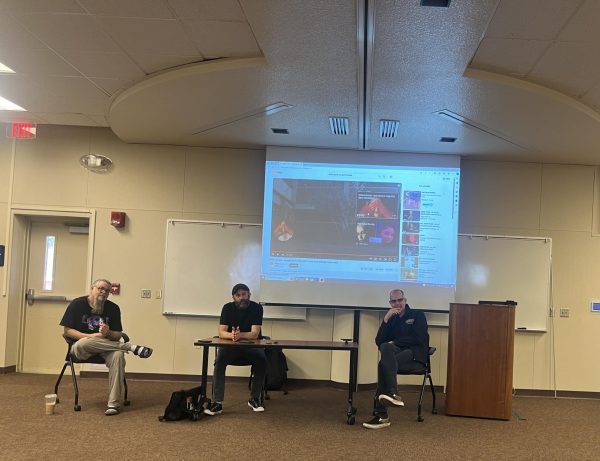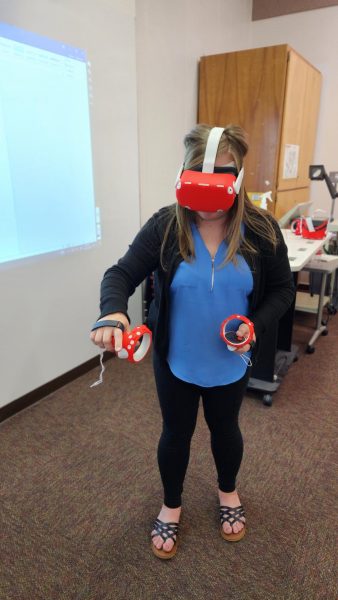BC Planetarium hosts Dynamic Earth film
November 30, 2017
A showing of “Dynamic Earth: Exploring Earth’s Climate Engine,” a production made by Spitz Creative Media and NASA’s Scientific Visualization Studio, among others, was held in the William M Thomas Planetarium at Bakersfield College on Nov. 16.
The show, which began at 7:30 p.m., was prefaced by an exploration of the constellations visible in the night sky at this time of year. BC astronomy professor Nick Strobel used a laser pointer to point out constellations like Taurus, Cassiopeia, and Perseus, which were projected onto the 36-foot dome using a Chronos star projector. The projector was rotated multiple times to allow the audience to gaze at the stars from different cardinal directions. Strobel also showed the audience how few stars were visible in Bakersfield due to light pollution. “If you were to get on outside of the city, go out in the country or even, better yet, would be to get up out of the valley and go camping in the mountains, then you would see a lot more stars,” said Strobel. Lastly, he showed the audience what the Milky Way looked like on the dome.
“Dynamic Earth” was then played on the dome using a SciDome all-dome video system. The presentation, which is narrated by actor Liam Neeson, began by explaining how the Sun shields the planets in its orbit from dangerous cosmic waves, yet releases its own hazard in the form of coronal mass ejections, all while showing visuals of these solar winds. Then, the film explained how Earth’s magnetic field helps deflect solar winds, preventing it from becoming like Venus, which was described as being a, “witch’s brew of noxious chemicals, including thick sulfurous clouds,” with surface temperatures of almost 500 degrees Celsius due to the high amounts of carbon dioxide trapping the Sun’s heat.
The film then showed a computer simulation of how wind currents affect surface ocean currents and how tropical heat extremes result in storms and hurricanes and how heat drawn from the ocean increases the speed of hurricane winds.
The visuals then moved into the ocean to demonstrate how ocean life, like phytoplankton, contributes to the carbon cycle and reduces carbon dioxide.
“… Earth has kept CO2 levels in balance by absorbing and releasing it in roughly equal amounts. Lately, that balance has been shifting. The amount of carbon dioxide from human activities, including cars, power plants, and factories, now exceeds volcanoes by over 200 times,” said Neeson, explaining how the increased carbon dioxide has led to climate change.










